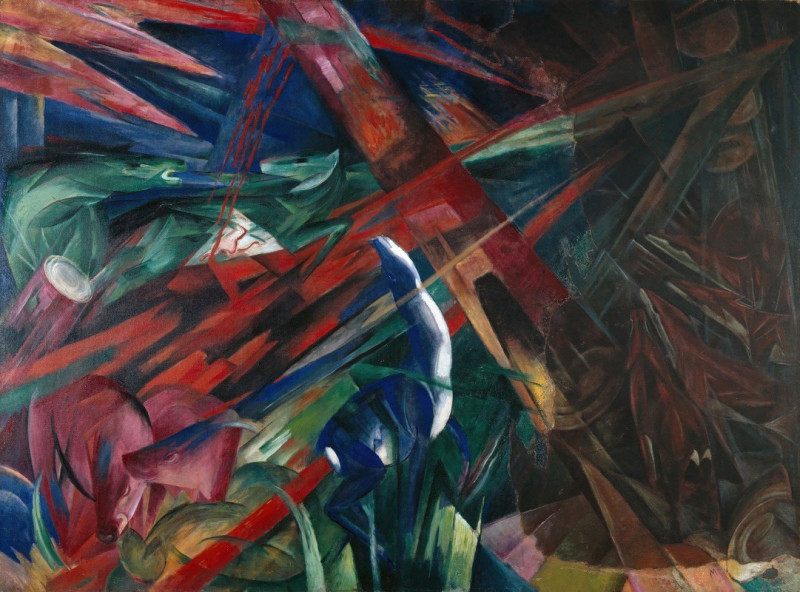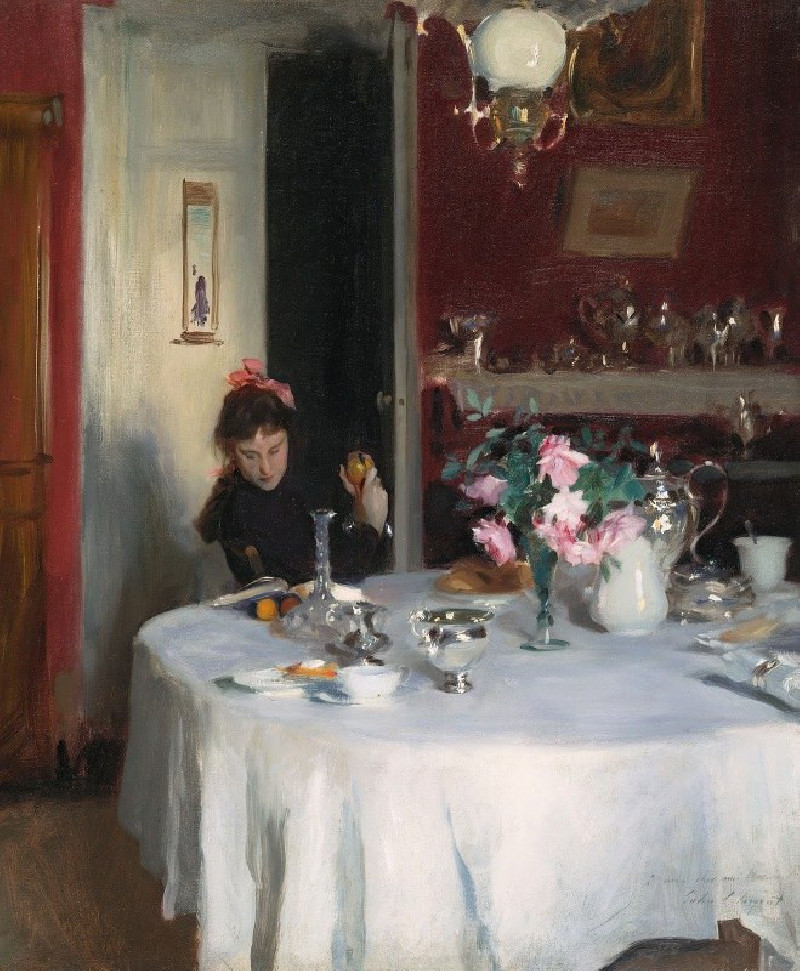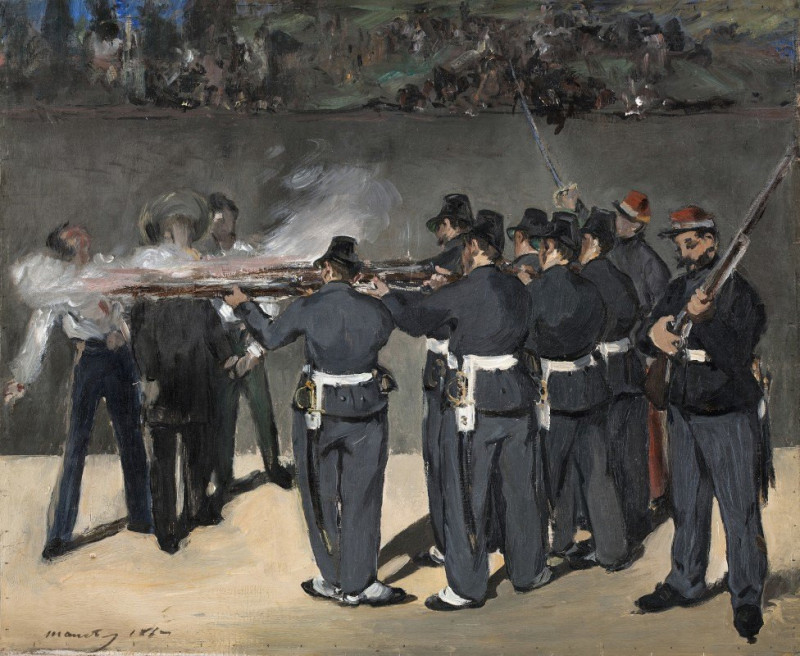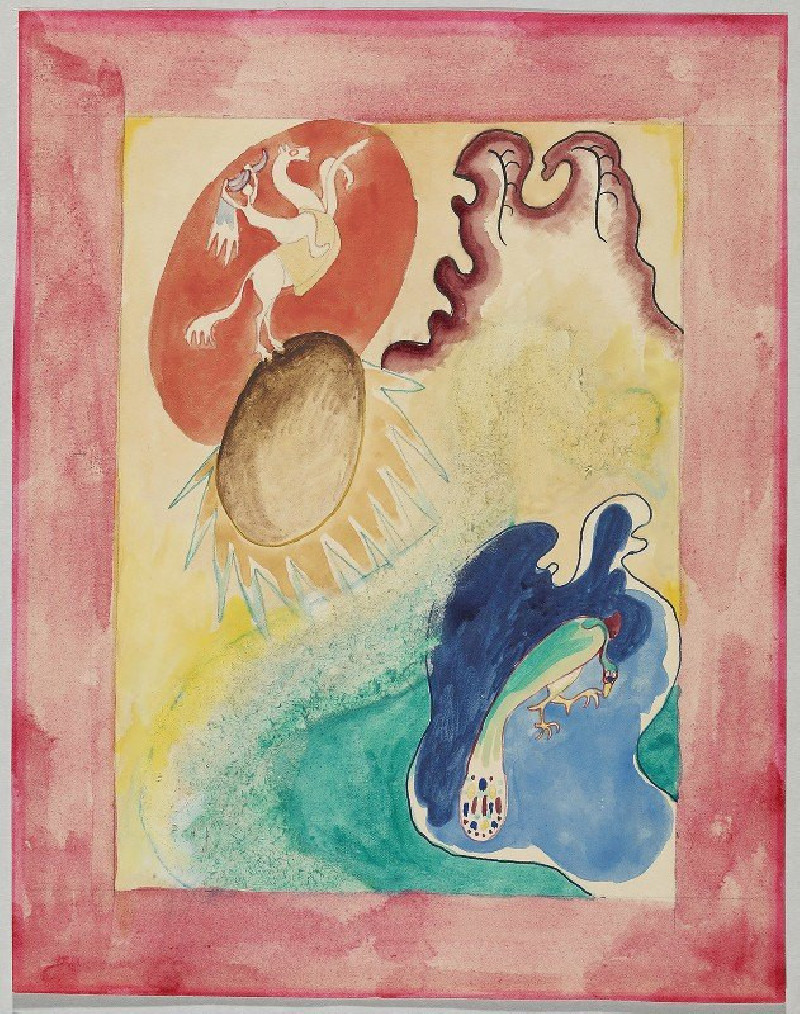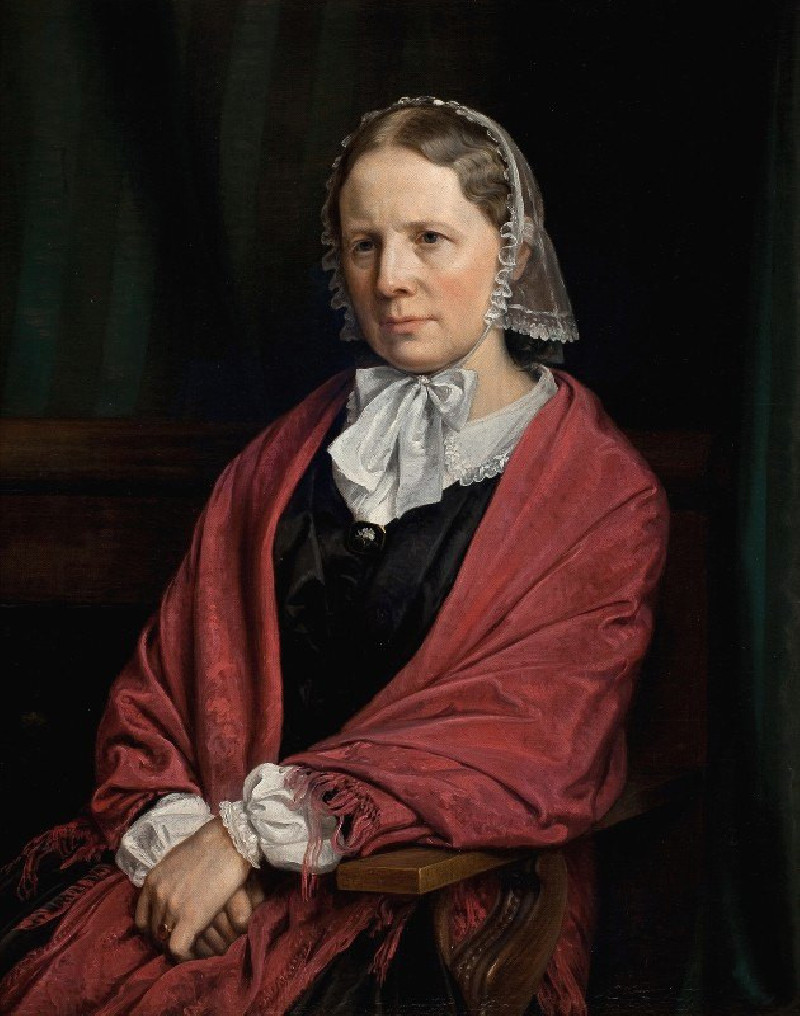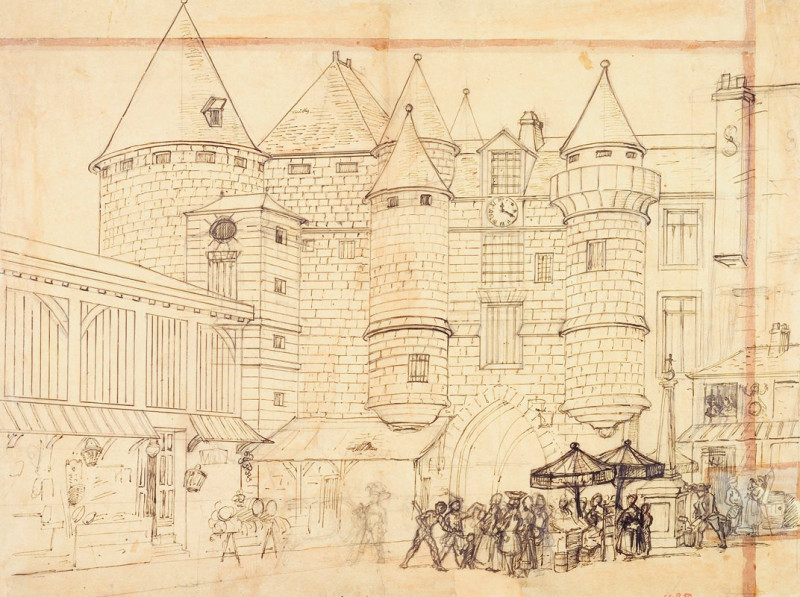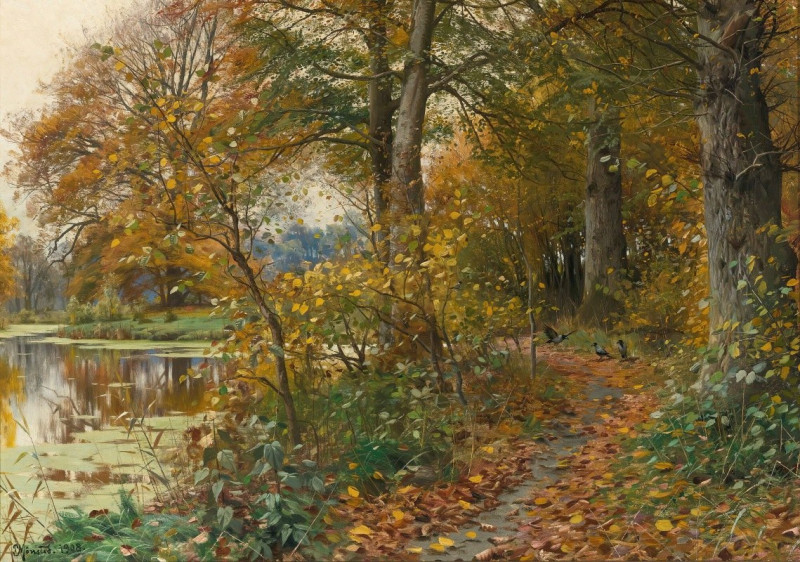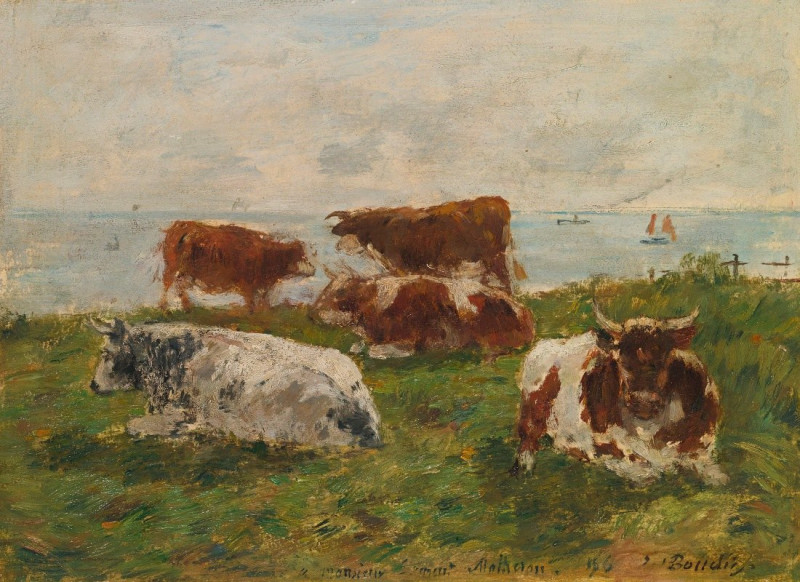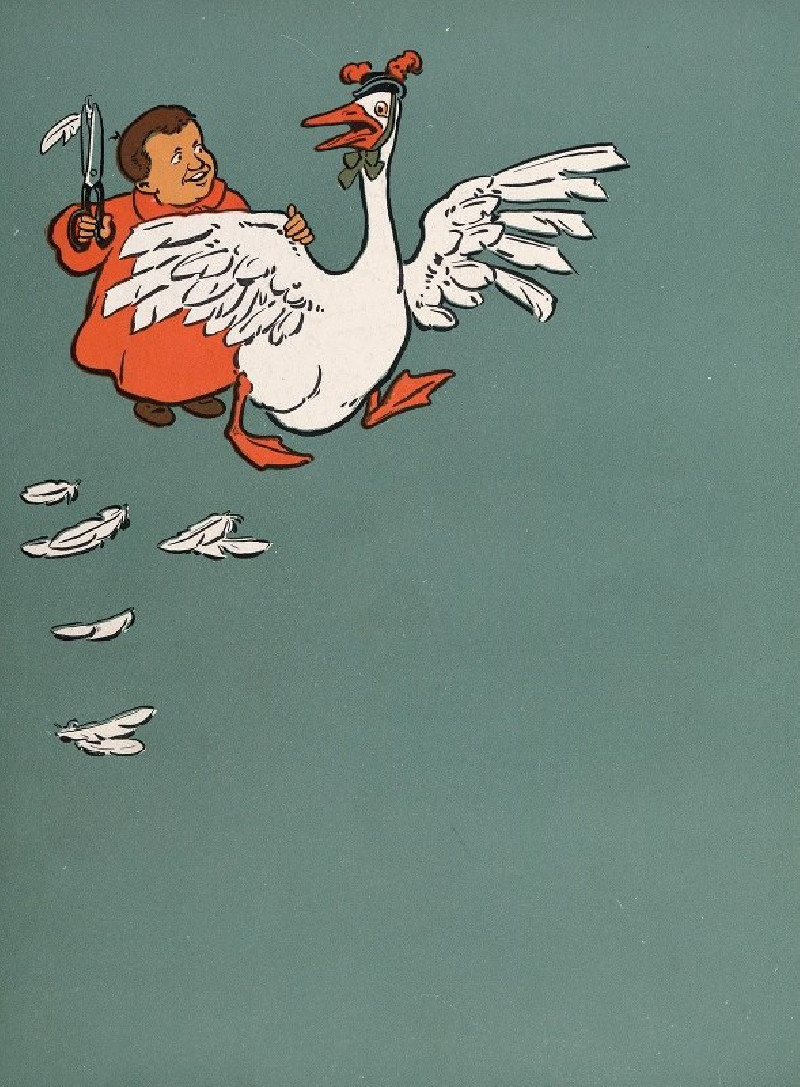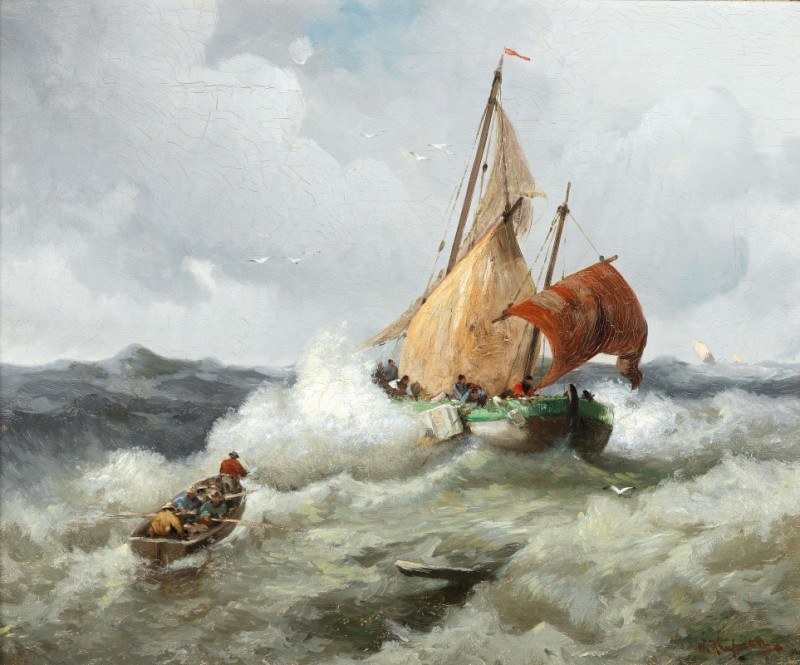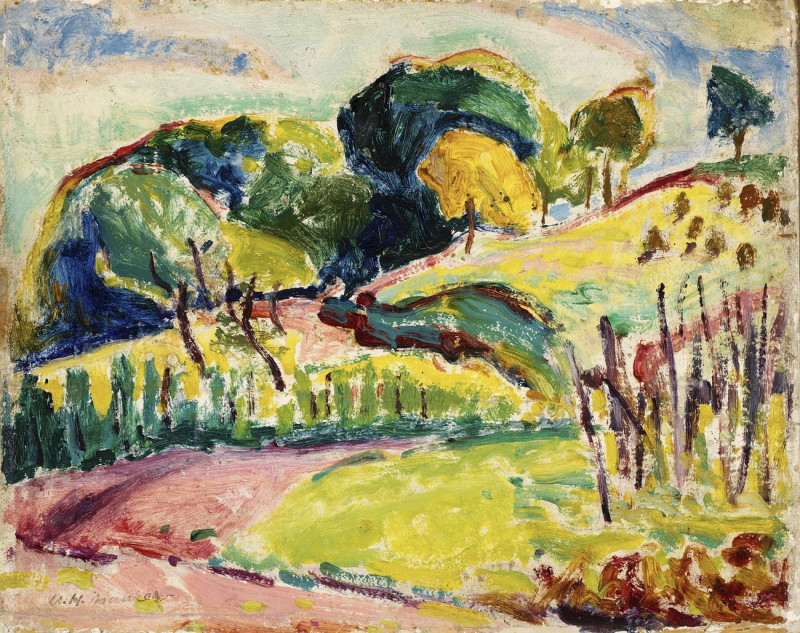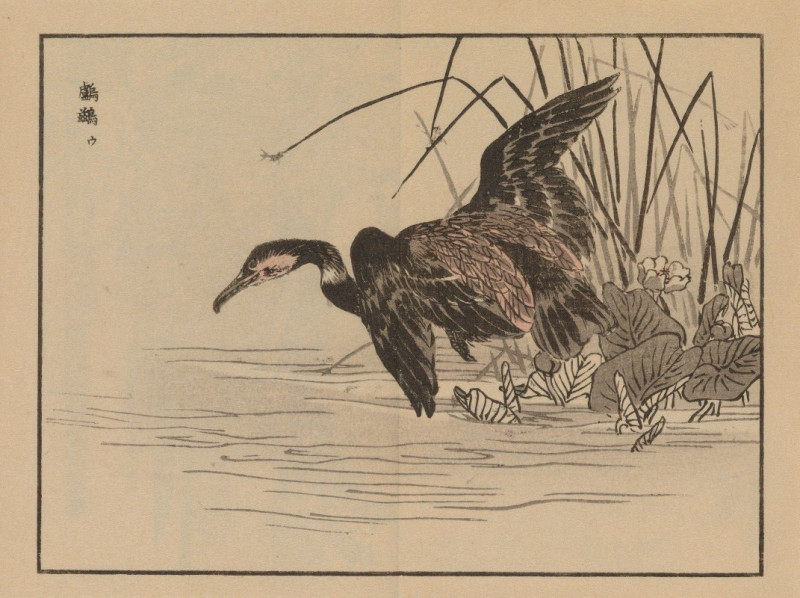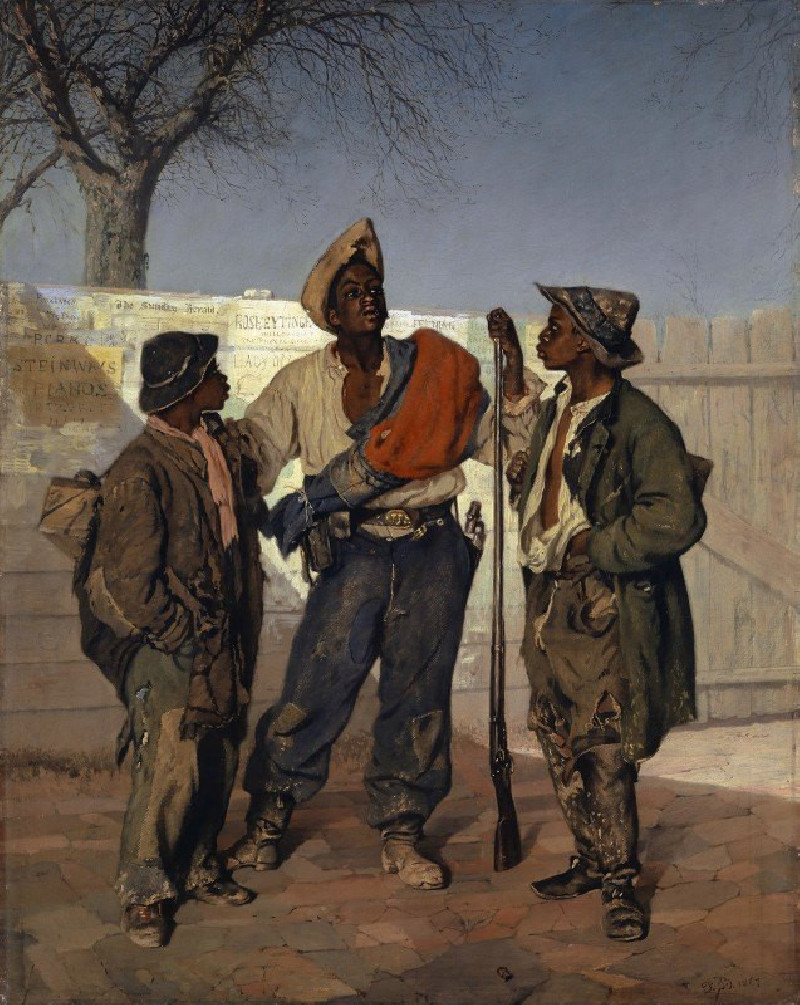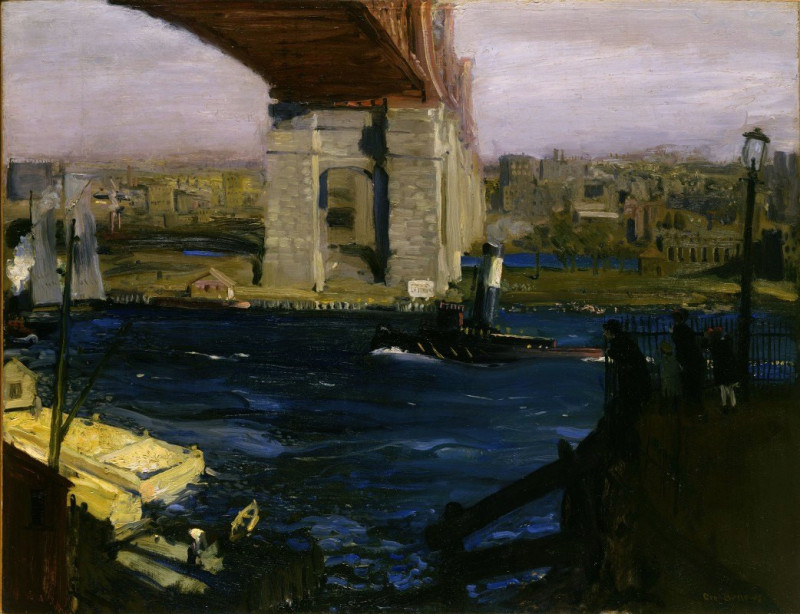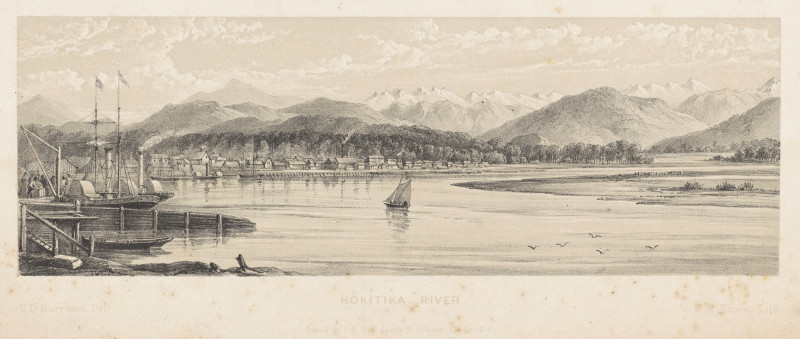Ekstatse (around 1928)
Technique: Giclée quality print
Recommended by our customers
More about this artwork
Discover the vibrant swirls and vivid dynamism in Karl Wiener's masterpiece "Ekstatse," created circa 1928. A compelling study in the harmony of color and form, this artwork is an exemplary showcase of abstract expressionism.The painting is an orchestra of curving lines and bold color transitions, where each hue passionately flows into the next, creating a visual symphony. Deep oranges and reds curl around soothing greens and blues, while stripes of brighter tones interject energy and movement into the composition. The pulsating arcs and whirls seem almost alive, suggesting motion and emotion that dance off the canvas.Wiener's use of color not only emphasizes the ecstasy in the painting's title but also plays with the viewer's perception, making the abstract forms suggest various interpretations, perhaps a visual representation of music, or the emotional contours of joy and rapture."Ekstatse" invites the viewer to pause and immerse in its depth, exploring the interplay of color and shape that transcends traditional visual boundaries.































